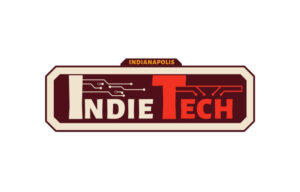As the Director of Consulting at Catalyit, I often encounter insurance agencies eager to integrate Robotic Process Automation (RPA) into their operations. It’s an exciting leap forward, and I commend you for taking this step.
RPA, or Robotic Process Automation, uses software bots to automate repetitive tasks without decision-making. It’s ideal for data entry, transaction processing, and simple workflow management, like collecting customer data or comparing policies.
RPA is transforming the industry by handling repetitive tasks with unmatched efficiency. However, while RPA is a powerful tool, its success ultimately hinges on the people using it—your team. Just like in any educational journey, preparation is key, and that’s where focused training comes into play.
The Importance of Training: More Than Just Plug-and-Play
One of the biggest misconceptions I’ve seen is the belief that RPA implementation is as simple as flipping a switch. It’s not. Think of RPA as a sophisticated piece of technology—like a new software program in a classroom. It can perform many tasks independently, but even the best technology can cause confusion without proper training. To truly leverage RPA’s capabilities, your team needs to be more than just familiar with it; they need to be proficient.
Training is not just about learning the mechanics. It’s about understanding the ‘why’ behind RPA—how it fits into your agency’s workflows and how to use the time it frees up to focus on more valuable work. In a classroom setting, this would be similar to ensuring students understand the relevance of the material, not just memorizing facts.
Start with the Basics: Understanding RPA’s Role
Before diving into the practical aspects, it’s crucial to lay a solid foundation. Begin by helping your team understand RPA and why it’s being introduced. I recommend using simple analogies—like describing RPA as a “digital assistant” that handles routine tasks, freeing them up to focus on more complex and rewarding work. Just as in teaching, when students grasp the fundamental concepts, they’re better equipped to build on that knowledge.
Help your team see RPA as an aid, not a threat. Emphasize that RPA is there to assist, not replace them. This will not only ease any anxieties but also foster collaboration between the team and the technology.
Hands-On Learning: The Power of Practice
Once the basics are understood, it’s time to move from theory to practice. Just as students learn best by doing, your team will gain confidence with RPA through hands-on experience. I suggest starting with guided exercises—much like how a teacher might walk students through a math problem step-by-step.
Introduce the specific processes that will be automated and allow your team to interact with the RPA tools in a controlled environment. This could be a sandbox setting where they can practice without the pressure of real-world consequences. Think of it as a lab session where mistakes are part of the learning process, and confidence is built through repetition.
Troubleshooting and Support: A Safety Net for Learning
Even with the best preparation, challenges will arise. In education, we equip students with problem-solving skills so they know how to approach issues when they’re stuck. The same principle applies here. Ensure your team knows where to turn if they encounter difficulties—whether it’s an internal IT team, a designated RPA specialist, or a troubleshooting flow chart.
Moreover, teach your team basic troubleshooting skills. This is similar to teaching students how to use a dictionary or other resources to find answers independently. Knowing how to solve common problems can reduce downtime and build your team’s confidence.
Continuous Learning: Staying Current with Evolving Technology
In the world of education, learning never stops. The same is true for RPA. As new features and updates are introduced, continuous learning is essential. Regular training sessions, workshops, and peer-to-peer learning opportunities can keep your team current. Encourage them to share their experiences—both successes and challenges—as this peer learning can be incredibly effective, just as it is in a classroom setting.
Embrace the Change: RPA as an Opportunity for Growth
Change, particularly when it involves new technology, can be daunting. However, with proper training and support, your team can not only adapt to RPA but also thrive with it. By investing in their training, you’re empowering them to succeed in an increasingly automated world. This isn’t just about learning a new tool; it’s about growing together as a team and positioning your agency for future success.
At Catalyit, we believe in the power of education as a tool for transformation. As you embark on this RPA journey, remember that the most successful implementations are those where the technology serves the people, not vice versa. Equip your team with the knowledge, skills, and confidence they need, and you’ll see the benefits ripple throughout your agency.
After all, at the end of the day, it’s not just about the technology—it’s about the people who use it.






































